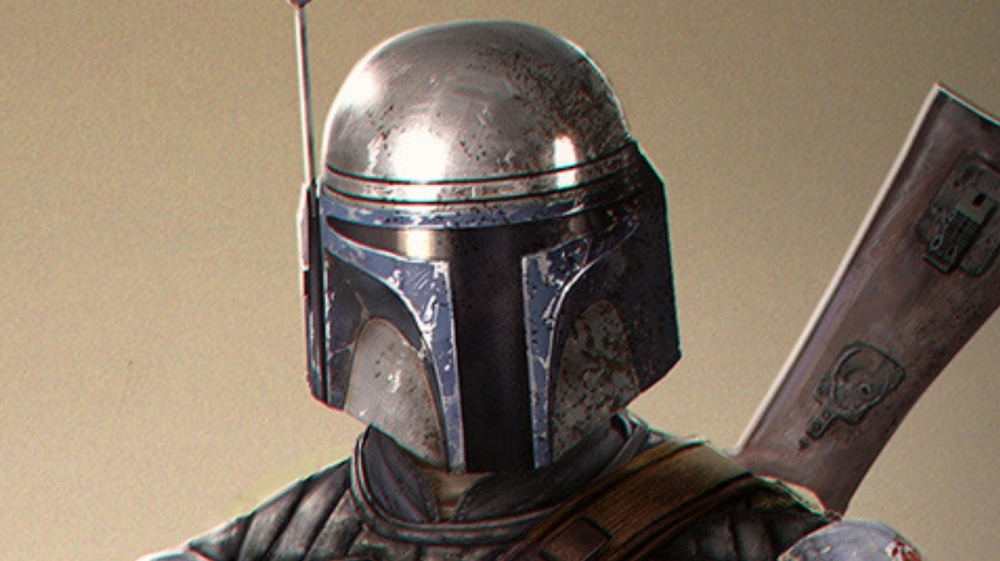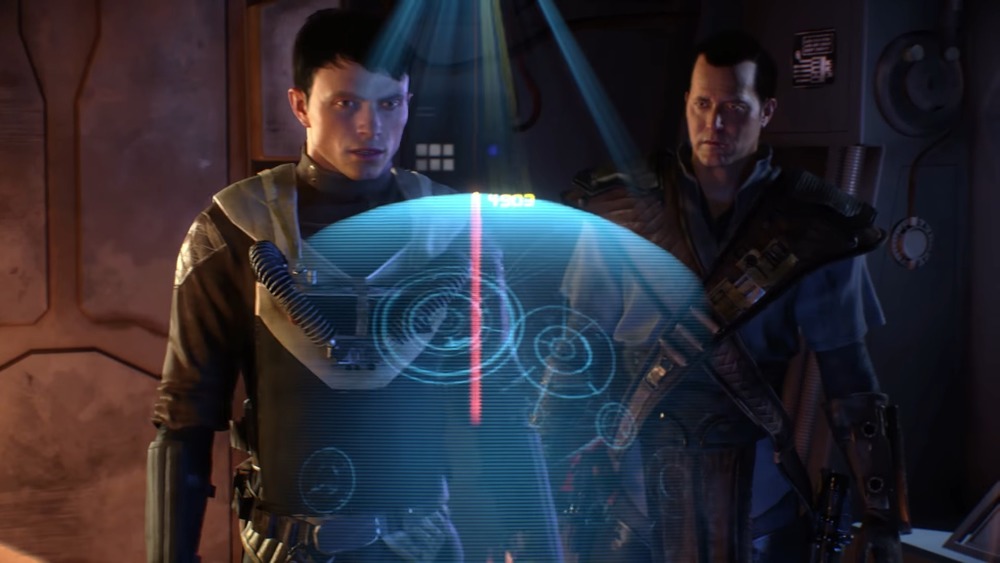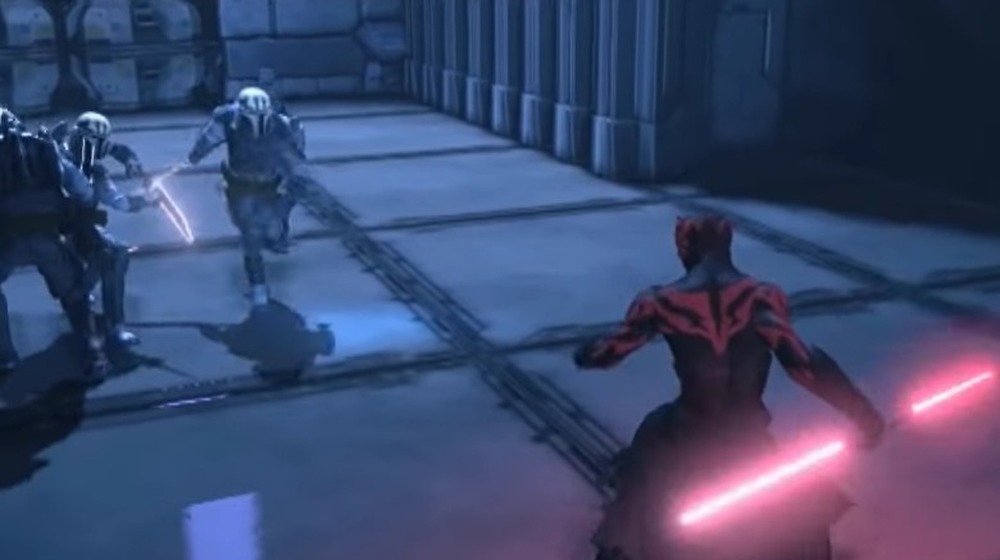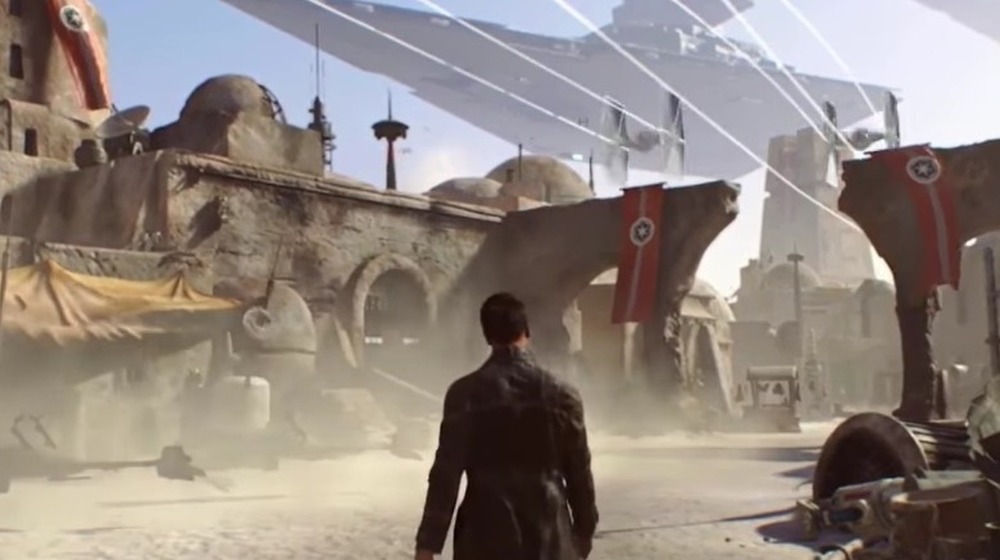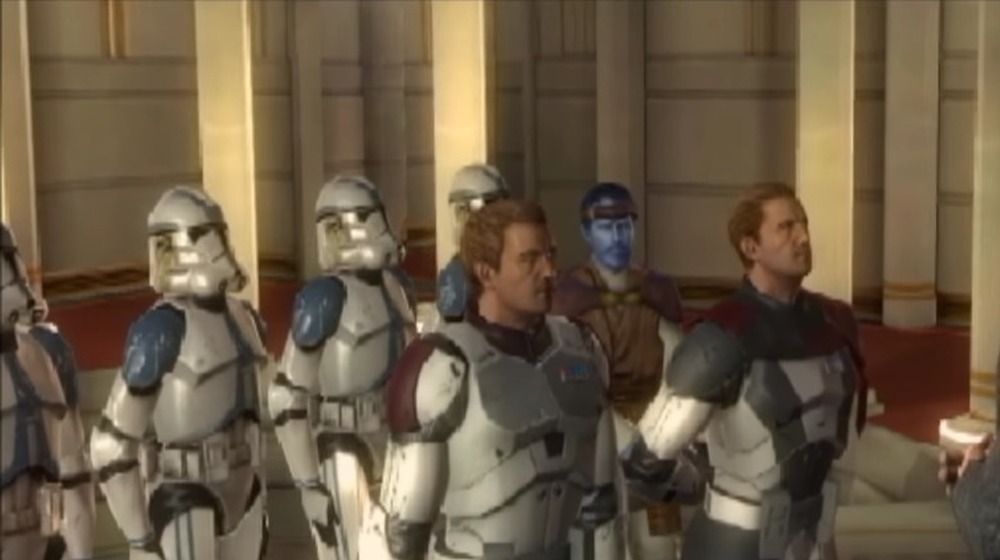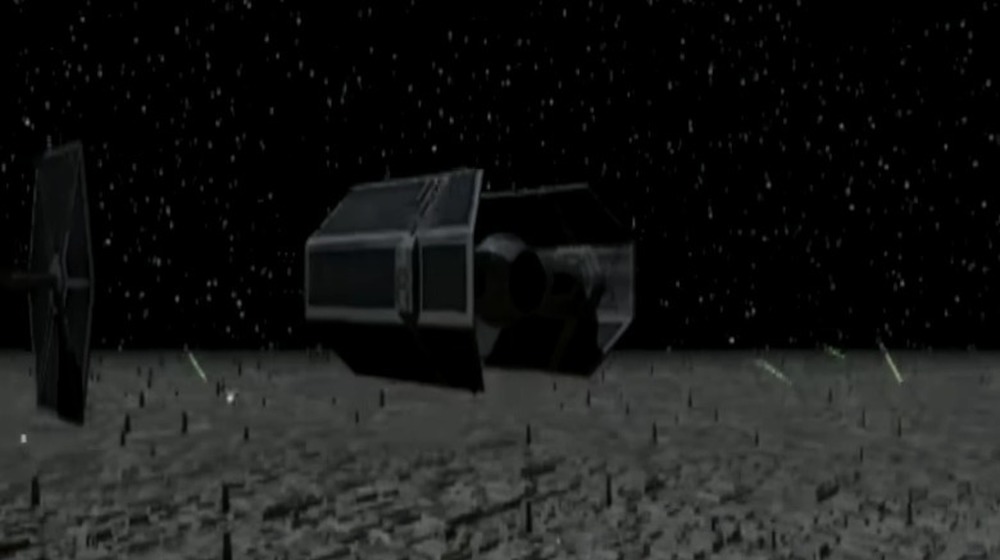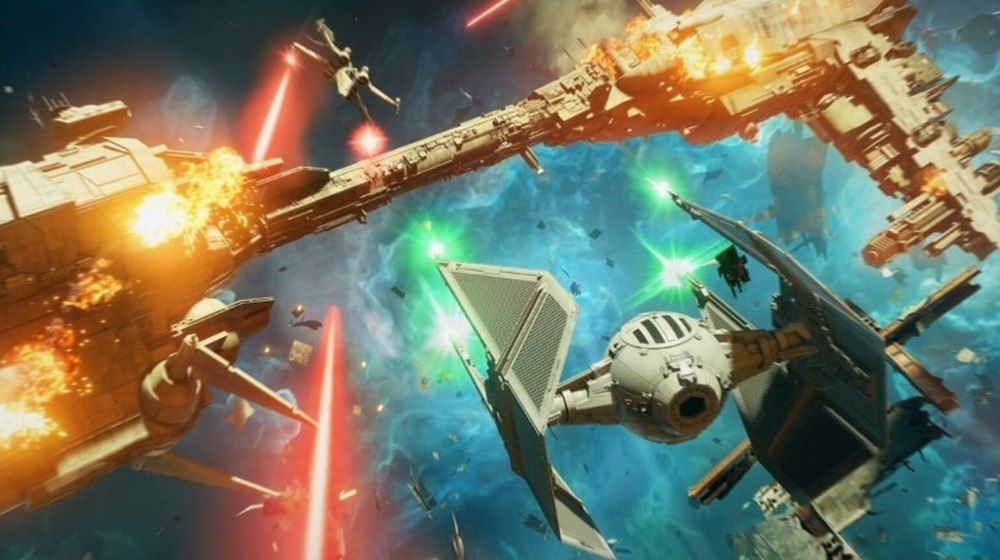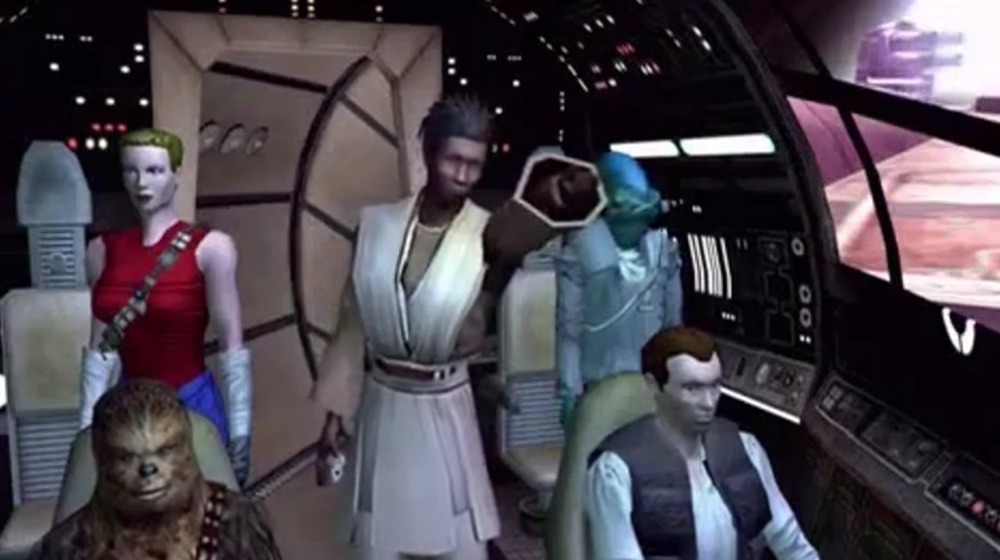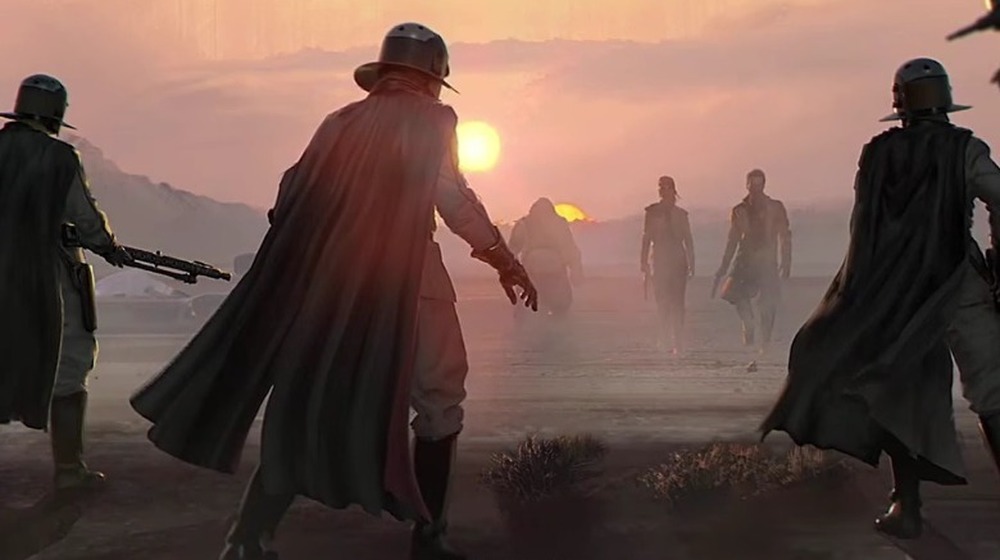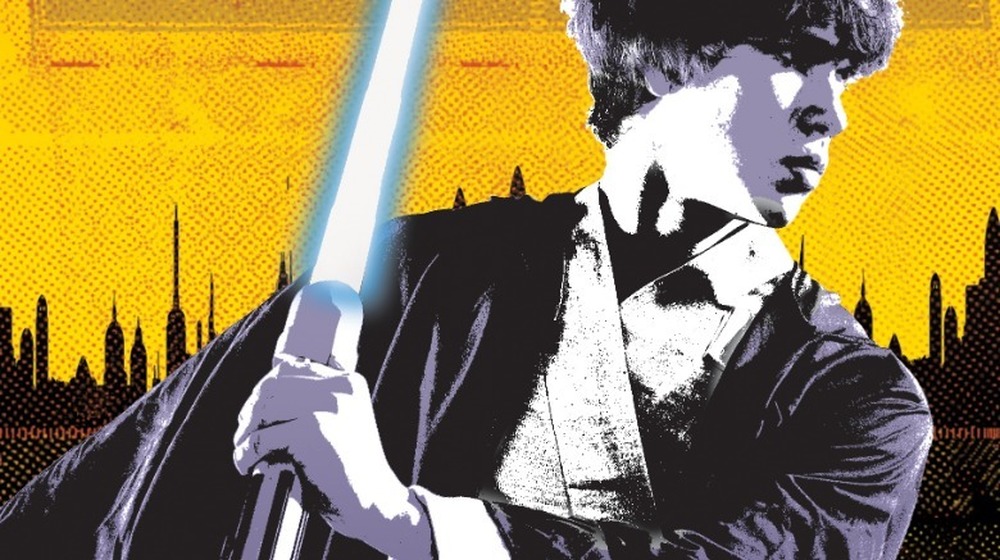The Real Reason These Star Wars Games Were Canceled
We may receive a commission on purchases made from links.
It was a time of prosperity for the Star Wars community. LUCASARTS was at the height of its power, and gamers across the world enjoyed video games based on the celebrated series. Audiences looked forward to the future, its Star Wars titles, and the stories they would hold.
But gamers never suspected every Star Wars project came with a cost. Each time LUCASARTS produced a Star Wars game, it usually sacrificed another game, some of which were rival Star Wars projects. But even the chosen games were not guaranteed to reach completion.
As financial problems assaulted the world, LUCASARTS eventually crumbled, taking with it some of the most promising Star Wars games audiences have ever seen. Another company, EA, stepped in to take its place, but this organization was not immune to repeating LUCASARTS' history of canceling Star Wars video games. Few audiences realize the true scope of the canceled Star Wars game legacy, but one article sought to chronicle the history of aborted projects and tell their tales...
Warning: this article contains Star Wars spoilers.
Star Wars 1313
Star Wars 1313 is easily one of most infamous examples of a canceled Star Wars video game. The hype and anticipation behind this game could choke a bantha. 1313 was supposed to take place in the subterranean underworld of Coruscant and star a young Boba Fett, long before he entered the movies — sort of like how Jango Fett received a dedicated video game of his pre-Clone Wars days. Like DNA donor, like clone.
The game could have marked the beginning of a new generation of Star Wars games, partially because it would have been the franchises' first M-rated title (via IGN). However, Star Wars 1313 became the face of everything gamers hated about the next generation because it heralded the death of LucasArts. On April 3, 2013, Disney shut down LucasArts, laid off the company's staff, and canceled all ongoing projects, and Star Wars 1313 was one of those projects. In one swift move, Disney accidentally transformed the title into a rallying cry gamers and Star Wars fans could gather behind to decry the House of Mouse.
Of course, when LucasArts went the way of Alderaan, Star Wars 1313 wasn't the only victim. The company also scrapped several other projects in the pipeline, including the multiplayer shooter Star Wars: First Assault and Star Wars: The Force Unleashed 3.
Battle of the Sith Lords (aka. Maul)
You can't keep a popular Sith down. Even though Darth Maul (seemingly) died at the end of Star Wars Episode 1, he was resurrected for Clone Wars, Rebels, and Solo: A Star Wars Story. LucasArts almost brought him back for a video game.
Initially, LucasArts tasked Red Fly Studio with producing Battle of the Sith Lords, an action/stealth game for the Wii. Aside from starring Darth Maul, the developers didn't have much direction, so they brainstormed plot concepts such as an origin story. Eventually, George Lucas asked the studio to include Darth Talon, who lived 170 years after Maul's death. As a result, Battle of the Sith Lords changed focus from starring Maul to starring a clone or descendent. But at least Red Fly Studio had finally settled on a story and was ready to begin production in earnest.
Even though Red Fly Studio quickly produced prototypes, the company's ambitions tumbled out of hyperspace. According to Game Informer, LucasArts dropped all communication, and by the time Red Fly reestablished contact, they learned LucasArts had canceled Battle of the Sith Lords. CEO Dan Borth places the blame squarely on Disney because it bought LucasArts.
Project Ragtag
Some may feel EA's tenure with Star Wars exclusivity is a stain on the franchise's history since so few games were released. Turns out the reason EA released so few Star Wars games is it was too busy canceling other Star Wars games. To add some salt in that wound, EA axed one of its more promising projects because its developers did exactly what they were asked to do.
Project Ragtag is one of EA's most infamous canceled games. The title started life as the open-world pirate project Jamaica. But EA scrapped it because it was too similar to Assassin's Creed 4: Black Flag. Jamaica was later resurrected as Yuma, swapped sea pirates for space pirates, and adopted a heist scenario that was part Ocean's Eleven, part Uncharted, but all Star Wars. Problems cropped up when EA told the studio in charge, Visceral Games, the title would have to compete with the likes of Uncharted 4 and use the problematic Frostbite engine (as revealed by Fortune). Yet despite all that, audiences loved preview footage.
However, broad fan appeal only got Visceral so far. EA eventually canceled Project Ragtag and liquidated Visceral along with it. Why did EA cancel the game? The higher-ups might have thought it resembled Uncharted a little too much. How ironic.
Star Wars: Battlefront 3
Many gamers claim Star Wars: Battlefront 2 is the best entry in the Battlefront series. So why didn't LucasArts capitalize on that game and release a Star Wars: Battlefront 3? Not for lack of trying.
While Pandemic Studios, best known for Destroy All Humans! 1 and 2, produced Star Wars: Battlefront 2, LucasArts tapped the team behind the TimeSplitters franchise, Free Radical Design, for Battlefront 3. Given TimeSplitters' legacy, Free Radical seemed like the perfect candidate. However, the studio was already busy developing Haze. Still, Free Radical thought it was up to the task of creating two games simultaneously. It wasn't.
Free Radical did not expect Haze to eat up as many resources as it did. According to GameSpot, the studio missed numerous Battlefront 3 milestones, and even Haze suffered setbacks. Yet despite these problems, the company thought it was a good idea to pitch TimeSplitters 4 while already knee-deep in two other games. Eventually, an unnamed GameSpot source suspected that Free Radical was cashing in LucasArts checks and using them to produce Haze (the company's cofounder Steve Ellis denied all allegations, again via GameSpot). But even when Haze released, Free Radical continued to miss Battlefront 3 milestones, so LucasArts cut its losses and canceled the game.
If LucasArts thought Free Radical Design could salvage Star Wars: Battlefront 3, Haze's bad reviews shattered those assumptions.
Star Wars: Dark Squadron
During the Nintendo 64 and Gamecube generations, the Star Wars: Rogue Squadron franchise reigned supreme. Audiences flocked behind the arcadey sci-fi flight series, and as time went on, they expected bigger and better things from developer Factor 5. The company planned to keep audiences engaged by flipping the script in a future entry, but you know what they say about the best laid plans of Mouse droids and Mandolorians.
Star Wars: Dark Squadron began life as a special mode in Star Wars: Rogue Squadron 2: Rogue Leader that put players into TIE Fighters and other Imperial spacecraft to see what would happen if the Empire won. Factor 5 wanted to expand on that idea in a future game, which would have essentially filled the boots of a Rogue Squadron 4. Dark Squadron would have even included new mechanics such as the ability to summon reinforcements and order orbital strikes.
When Factor 5 pitched Dark Squadron to LucasArts, the studio competed against an adventure game pitch that starred a young Chewbacca. Ultimately, Dark Squadron was canceled because the Chewbacca game won the pitch war. However, not even that game made it to the finish line because word came from George Lucas himself to cancel it.
Star Wars: Rogue Squadron: X-Wing vs. TIE Fighter
Before EA inked a deal to make Star Wars games, Factor 5 had dreams of a multiplayer/dogfighting-centric title. The studio tried to make that dream a reality with Star Wars: Rogue Squadron: X-Wing vs. TIE Fighter. Unfortunately, as Yoda would put it, Factor 5 did not make the game because he doesn't believe in the word "try."
Before X-Wing vs. TIE Fighter, Factor 5 started work on a Star Wars: Rogue Squadron trilogy for the Xbox, but that project was scrapped due to problems at LucasArts (via IGN). However, Factor 5 landed on its feet and began work on an Xbox 360 launch title, which would have been X-Wing vs. TIE Fighter. The project's goal was to take advantage of the Xbox 360's selling point, online multiplayer, and produce an experience that would revolve around online PvP battles. But LucasArts decided it wasn't ready to fund a console launch title and canceled X-Wing vs. TIE Fighter.
Not one to be discouraged by lightning striking twice, Factor 5 took a break from Star Wars to develop Lair and then resurrected the Rogue Squadron trilogy for the Wii. Credit where credit is due, Factor 5 finished the project this time. But according to IGN, the trilogy never released due to the financial crisis of 2008, Factor 5's self-funding of the project, LucasArts' "own financial woes," and two potential publishers for unrelated projects going bankrupt.
Proteus
Today, you can play plenty of MMOs on consoles, but gaming wasn't always like this. In the early days of MMOs, you could only play them on computers. Games like Phantasy Star Online helped forge a landscape where console MMOs are now commonplace, and the visionaries at LucasArts also wanted to be a part of that foundation-laying party. That dream died like a droid with a bad motivator.
Star Wars Galaxies was one of the best Star Wars games ever made thanks in no small part to the amount of freedom players had. Some developers wanted to translate that experience onto consoles, which turned into Proteus (working title). Sort of. Proteus actually formed from the ashes of another canceled console MMO project, Pangea. Proteus didn't fare any better since developers just couldn't fix problems with Proteus' interface and revenue model, which led to its ultimate cancelation.
What happened after Proteus? The team moved on to develop Star Wars: Knights of the Old Republic 3, but a curse must have formed from the corpses of Proteus and Pangea since KOTOR 3 was also canceled. This time, LucasArts' financial problems were to blame. Despite the title's name recognition, LucasArts simply didn't want to invest the money in such an expensive project.
Project Orca
After EA canceled Project Ragtag, it was back to business as usual: time to greenlight another project. But even though Ragtag had been shot down deader than Greedo, EA didn't want Visceral's hard work to go to waste. However, in the end, that pragmatic idea only postponed the inevitable.
The next Star Wars game on EA's docket was Project Orca, an open world game developed by EA Vancouver. According to Kotaku, Orca shared a lot of DNA with Ragtag and focused on the grittier, grounded part of the Star Wars universe. No Jedi, just a scoundrel or bounty hunter trying to make a name for themself among various factions. However, again according to Kotaku, EA's bosses looked at their calendar and realized that they didn't have enough Star Wars games scheduled for release (ironic given the company's history), so they decided to do something about it ... by canceling Project Orca.
Even though EA Vancouver recycled many Project Ragtag assets for Orca, developing the game would have taken far too long. You don't need the Force to feel the irony of EA canceling Ragtag (a smaller title), replacing it with a large project like Orca, and then canceling that to focus on smaller titles.
Star Wars: Episode 7 — Shadows of the Sith
Want a bit of fun Star Wars trivia? George Lucas originally planned to extend the main line Star Wars series past Episode 6, but he didn't want to shoot any more movies. So, LucasArts would have stepped in to further the Skywalker Saga with a video game. Yes, a video game. Unfortunately, that plan hit a big wall.
LucasArts' hypothetical game, Star Wars: Episode 7 — Shadows of the Sith, was first publicly unveiled in the book Rogue Leaders: The Story of LucasArts as a failed game pitch logo. After seeing this, Cinelinx author Jordan Maison reached out to ex-LucasArts creative director Haden Blackman. According to Blackman, Shadows of the Sith was envisioned as an adventure starring the now non-canon Ben Skywalker, son of Luke Skywalker and Mara Jade. During the game, Ben would have walked between the light and dark sides of the Force, used powers never seen before, and fought "a Solo," presumably Jacen Solo, aka. Darth Caedus, son of Han Solo and Leia Organa.
Shadows of the Sith never got past the paper pitch phase, partially because it lost to another pitch, Scum and Villainy, which evolved into the later-canceled Star Wars: Smuggler. However, the story of Star Wars: Episode 7 — Shadows of the Sith didn't end there. Blackman recycled several elements and stitched them together with other cherry-picked pitch ideas into Star Wars: The Force Unleashed.

